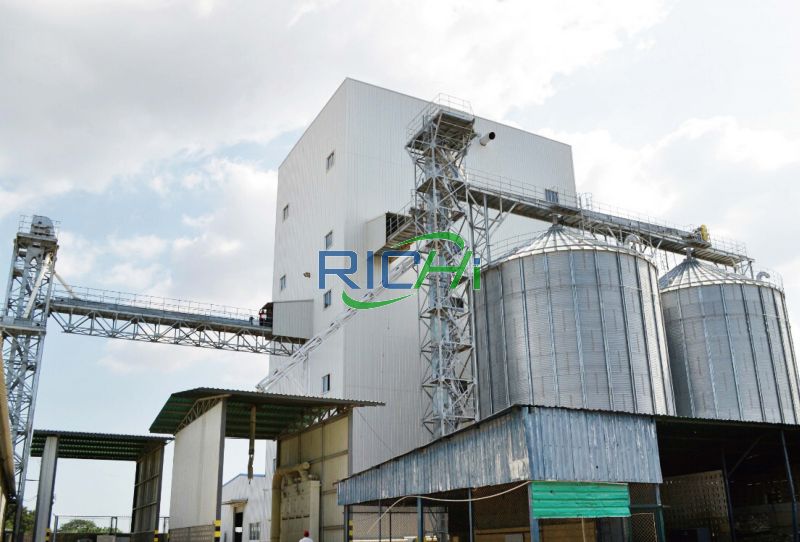
1-60T/H Automatic Premix Feed Mill Solution
RICHI premix feed mill is designed to mix vitamins and other desired components with the main feed, suitable for both industrial and farm applications, can be installed at existing plants or built as modules at the premix factory.
- Capacity: 1-60T/H
- Premix feed mill cost: 100,000-3,000,000 USD
- The business we can provide: equipment manufacturing, construction of new feed mills, transformation of old feed mills

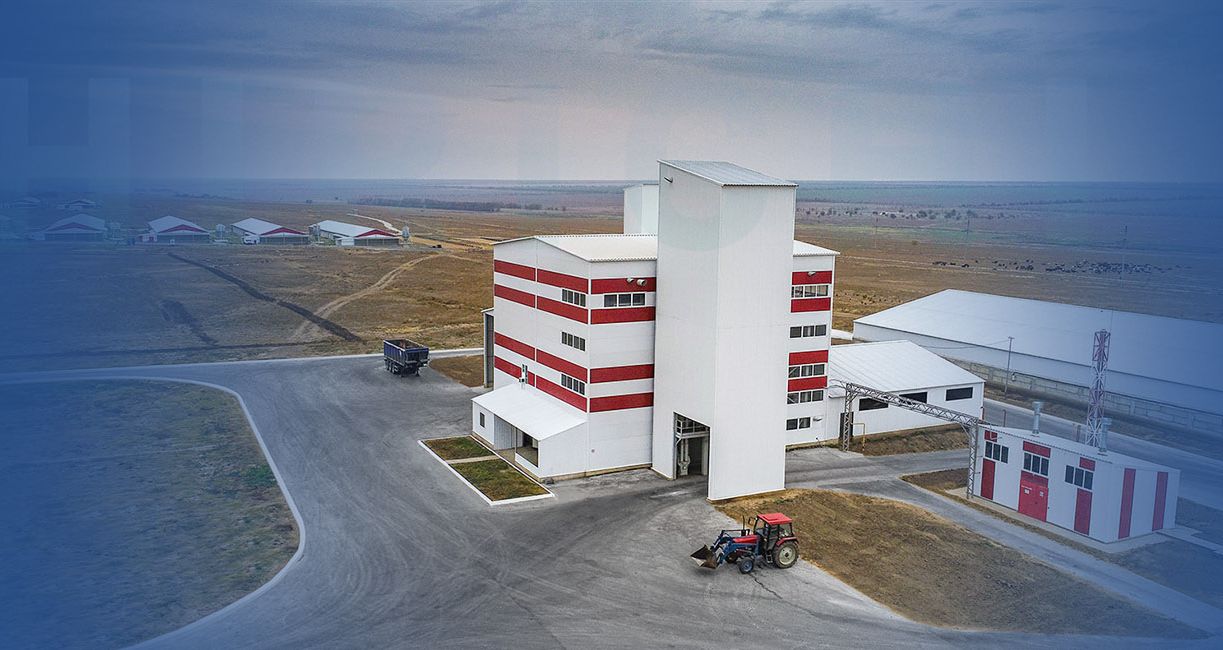
We specialize in high value and safe premix feed mill solutions.
Rising global demand for high-protein products, rising meat consumption, rising meat quality, safety awareness, and frequent disease outbreaks are driving the growth in demand for feed premixes and additives, especially in emerging markets. Rising raw material costs and regulatory factors represent both constraints and potential opportunities for feed producers.
RICHI MACHINERY is familiar with the rules, requirements and standards of premix production and application, and applies them in the design, manufacture and installation process of premix processing solutions, enabling customers to efficiently process raw materials and increase the added value of raw materials.
At the same time, precise, environmentally friendly and safe high-quality premix products are introduced to the market.
Types of Premix Feed Mill
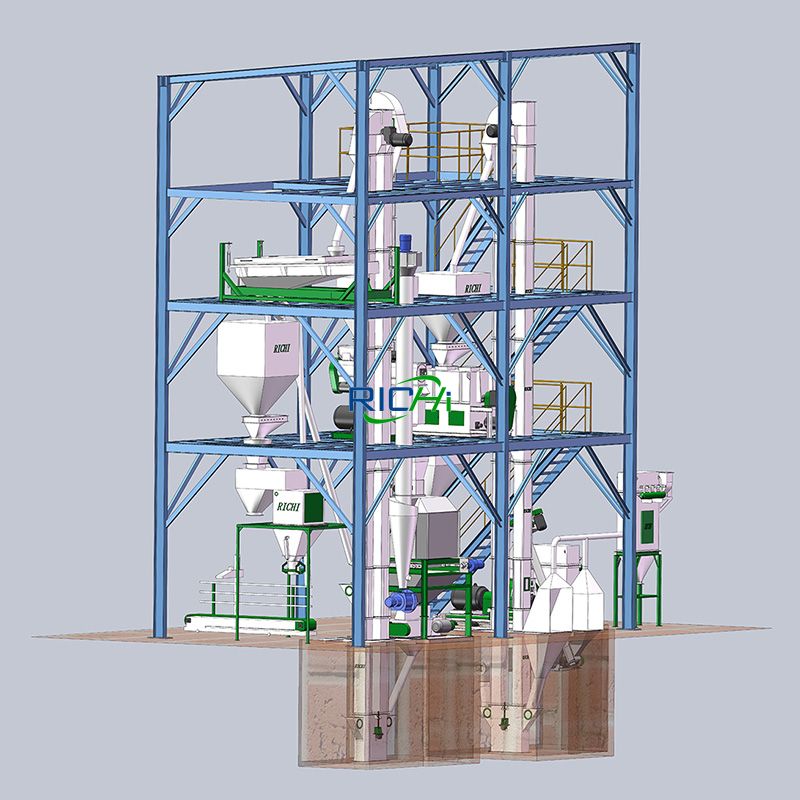
Single premix feed production line
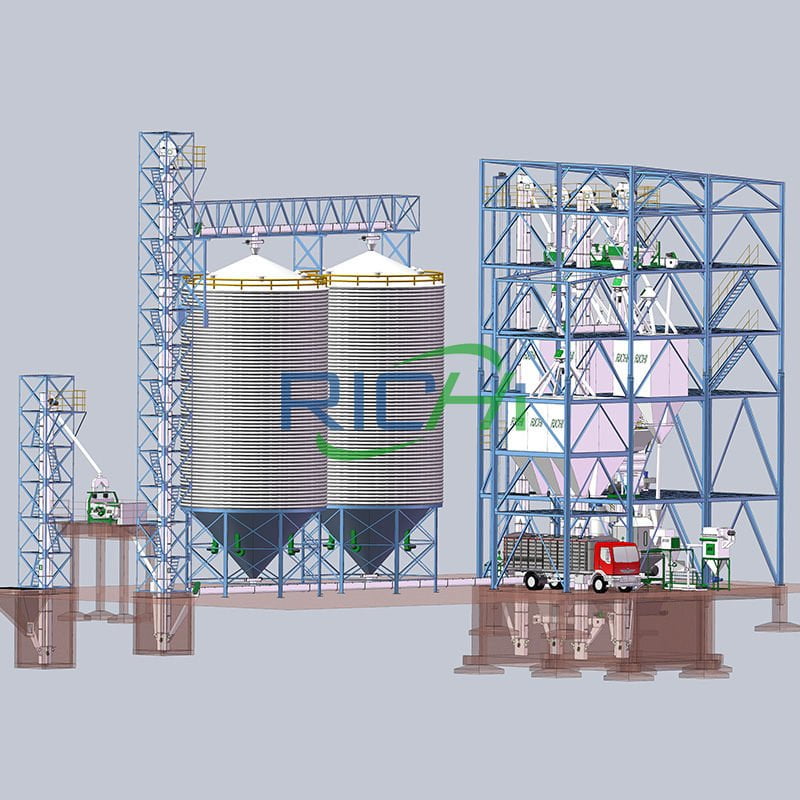
Poultry livestock Pellet feed and premix plants
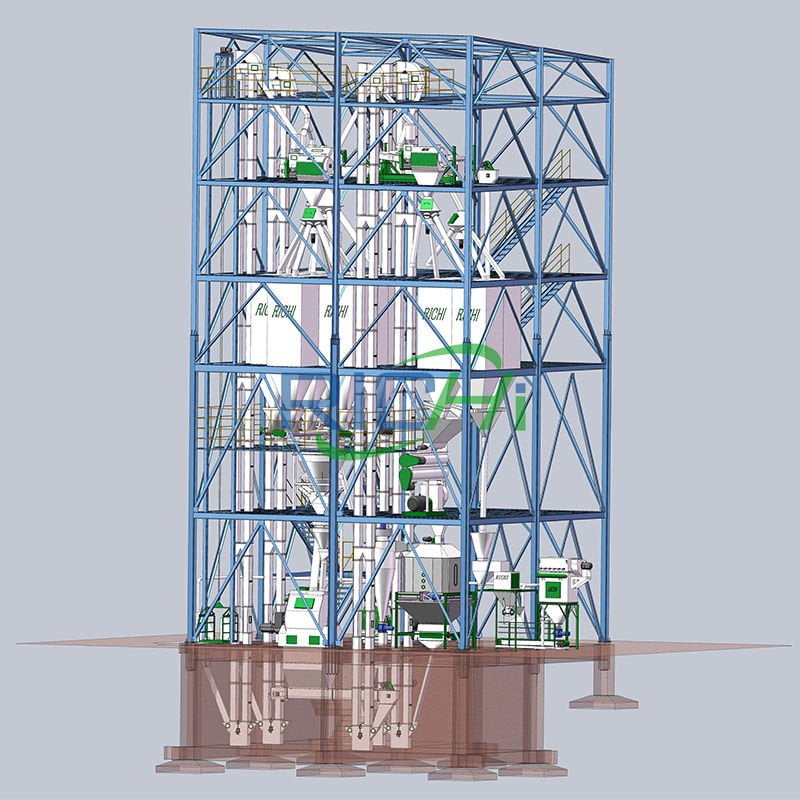
Aqua fish shrimp pellet feed and premix plants
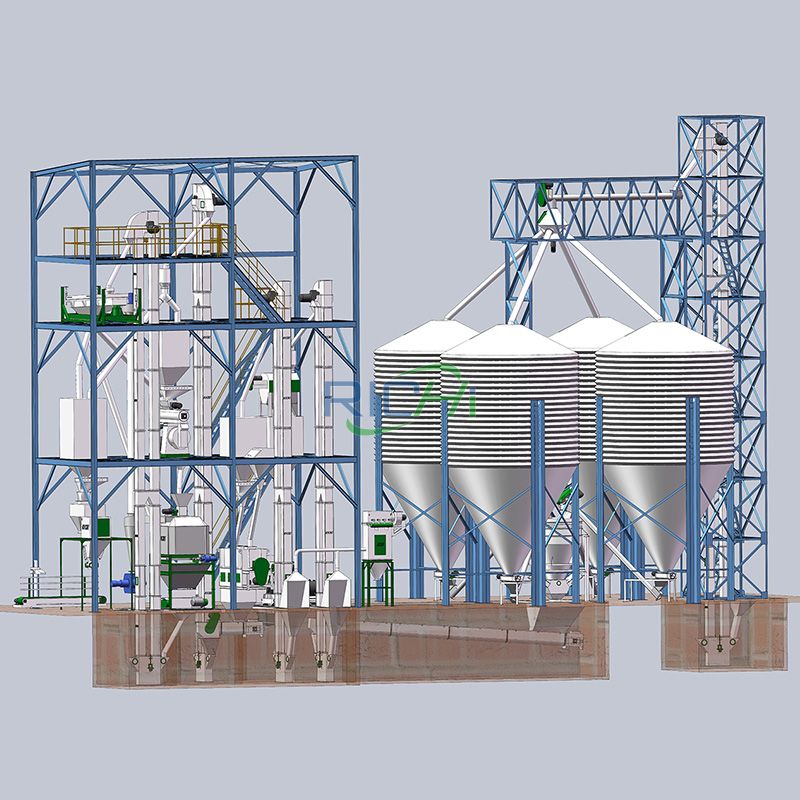
Concentrate feed and premix plants
Complete premix feed mill construction
We offer the appropriate technology:
- Adoption technology
- Silos
- Conveyor technology for bulk materials
- Dosing and weighing systems
- Grinding systems and screening technology
- Mixed media
- Hygienisierungssysteme
- Filter systems and piping systems
- Packaging technology
- Computer controllers and process control systems
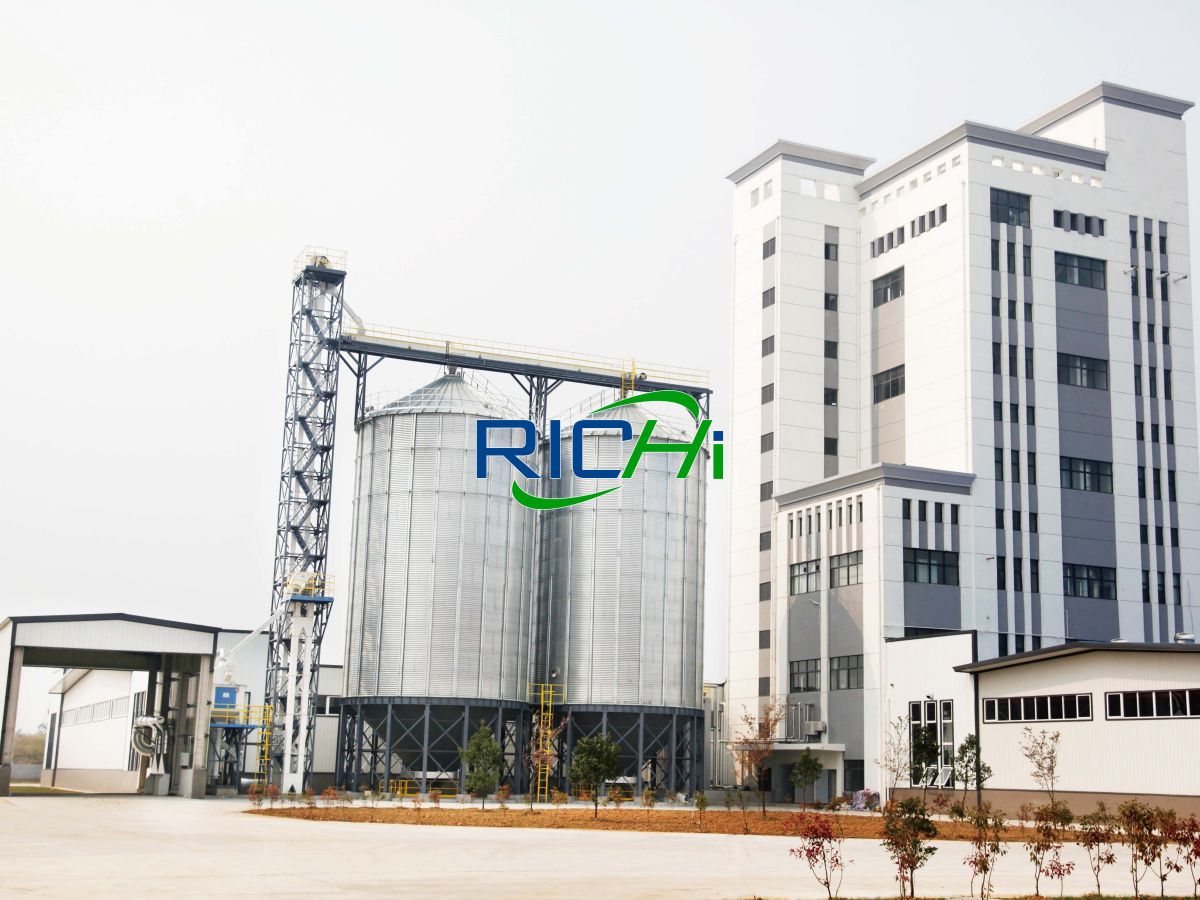
We are happy to take on the complete planning and construction of premix feed mills. In addition, we offer full service – from analysis to concept development, project planning,production, delivery, installation and site management to commissioning. Premix feed plants for the production of 0.2% premixes or 10% to 20% supplementary feeds are no challenge for us.
Premix feed mill Process Design
Premixes not only reflect considerable technical content in formula design, but also have high requirements in raw material feeding, metering and mixing, finished product packaging and storage, dust removal and other processing techniques, and its quality is directly related to the quality of feed products and safe.
The premix animal feed mill plant process mainly includes raw material reception, raw material cleaning, batching, mixing, packaging, dust removal, etc. According to the degree of automation of batching, the premix feed mixing plant technology is divided into three categories: manual batching, automatic batching of carriers and constant ingredients, and fully automatic batching.
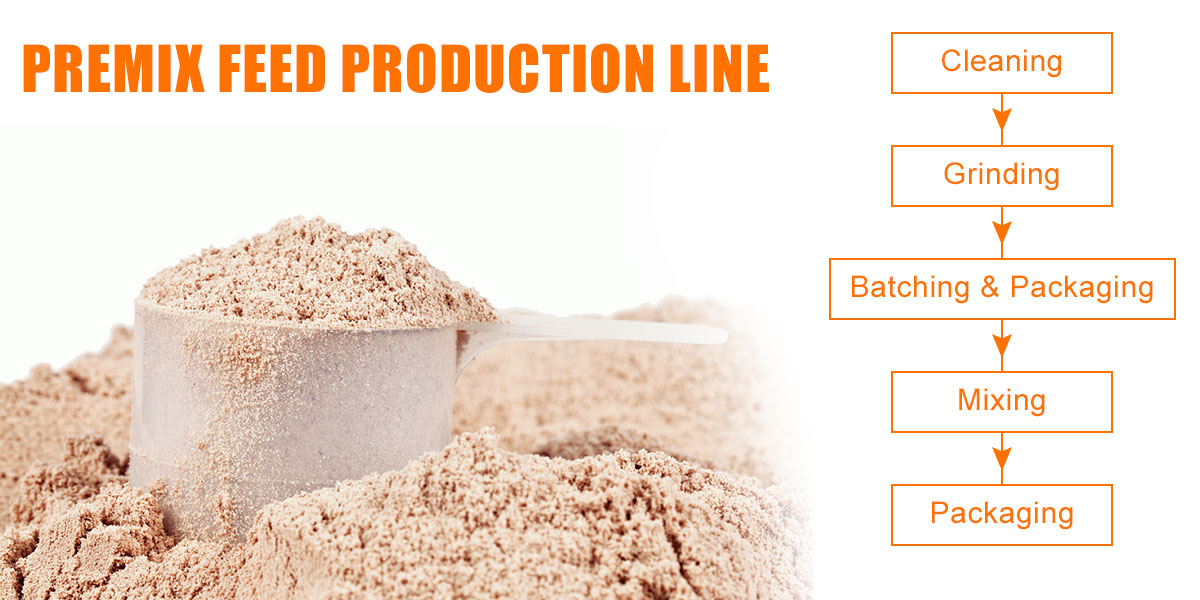
- Raw Material Receiving:
Receiving is the beginning of premix feed mill. In the production of animal feed or similar products, the receiving area covers the active process of various purchased materials used directly or indirectly.
Before bulk materials are stored in silos or warehouses, receiving equipment includes weighing systems, inspection instruments, unloading systems, cleaning systems, dust control equipment, receiving conveyors, distributors, spouts, etc. - Cleaning Section:
Washing is the main process of removing impurities in raw materials and separating crude raw materials. - Grinding Section:
Grinding is used to reduce the particle size of the premix ingredients to the required sieving standard. - Batching Section:
This is an important and critical step in the production of premixes. After receiving the task order of batch processing, the premixed material will be batch processed according to the specified quantity. Batch instructions may include recipes for premixes, order of additions, weighing and addition. - Mixing Section:
The mixing process is at the heart of making a premix. In the premix, the ratio of the ingredients varies greatly. Therefore, in order to obtain a uniform mixture, the mixing operation should be divided into two steps: micro mixing and macro mixing.
Micro-mixing, as the name suggests, is the mixing of minor ingredients weighing less than 1% of the capacity of the mixer. Whereas macro mixing is the actual mixing of all the ingredients of the premix with the carrier in the batch mixer. - Packaging Section:
The primary purpose of premix packaging is to maintain trace element stability and protect the integrity of the premix. The packaging operation begins when the finished premix enters the supply box above the packer and ends when the bagged feed is put into storage.
The procedure includes weighing each bag of premix, placing the weighed item in the bag, closing the bag opening, applying a label to the bag, coding and palletizing the bag, and moving the bag to a warehouse for storage.
Most premixed feed factories do not process raw materials, and the required raw materials such as vitamins, antibiotics, trace elements, carriers, etc. are provided by enterprises specializing in raw material processing in this area, and do not need to be equipped with raw material pretreatment procedures, such as crushing, dry etc. Of course, there are some animal feed premix manufacturers that need to process these raw materials.
premix feed mill cost
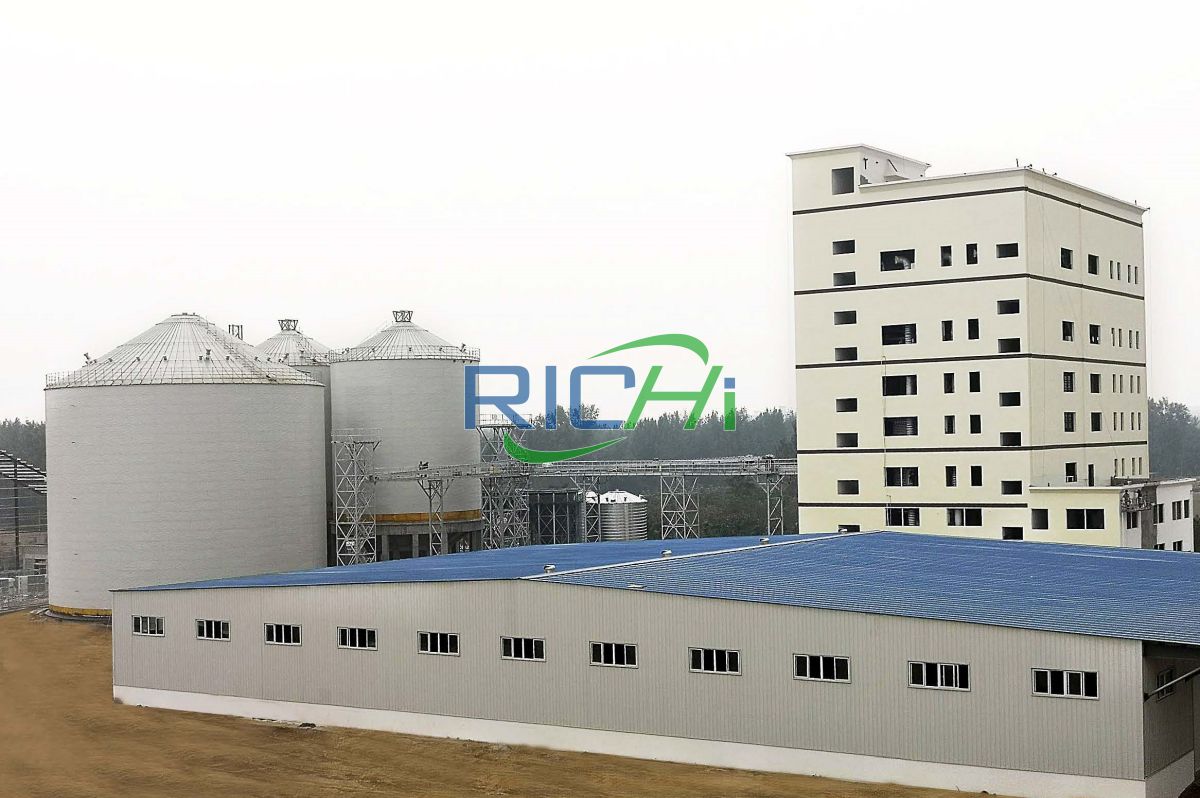
The 1-60t/h premix feed plant price is generally between 100,000 and 3 million. The price here is only the price of a complete set of premix feed mill equipment (including silos).
In terms of the investment of the whole feed premixing plant, the investment of the production line should not only consider the current investment of the premix feed production line equipment, but also the related production cost after the production line is put into operation, that is, equipment depreciation cost + manpower + energy consumption + maintenance cost.
If you have any questions about this, welcome to consult online directly, and our consultants will provide detailed solutions.
We are happy to take on the complete planning and construction of premix feed mills. In addition, we offer full service – from analysis to concept development, project planning,production, delivery, installation and site management to commissioning. Premix feed plants for the production of 0.2% premixes or 10% to 20% supplementary feeds are no challenge for us.
premix feed mill projects
At present, our automatic cattle feed plant equipment has been exported to the United States, Saudi Arabia, Argentina, South Africa, Uzbekistan, Indonesia, India, Zimbabwe, Ethiopia and other countries.
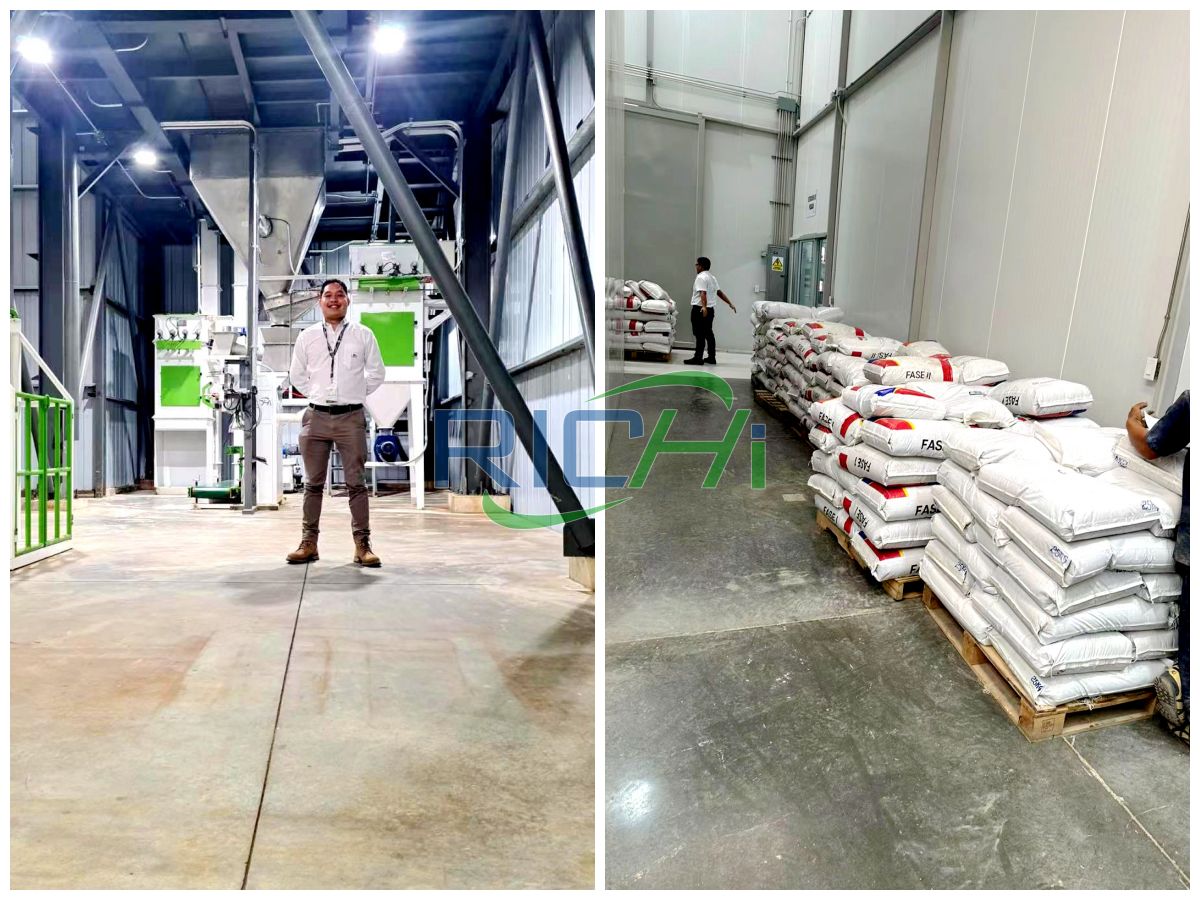
El Salvador
5 T/H Animal premix feed mill In El Salvador
- Project Time: 2022. 09.13
- Premix feed mill cost: 480,000 USD
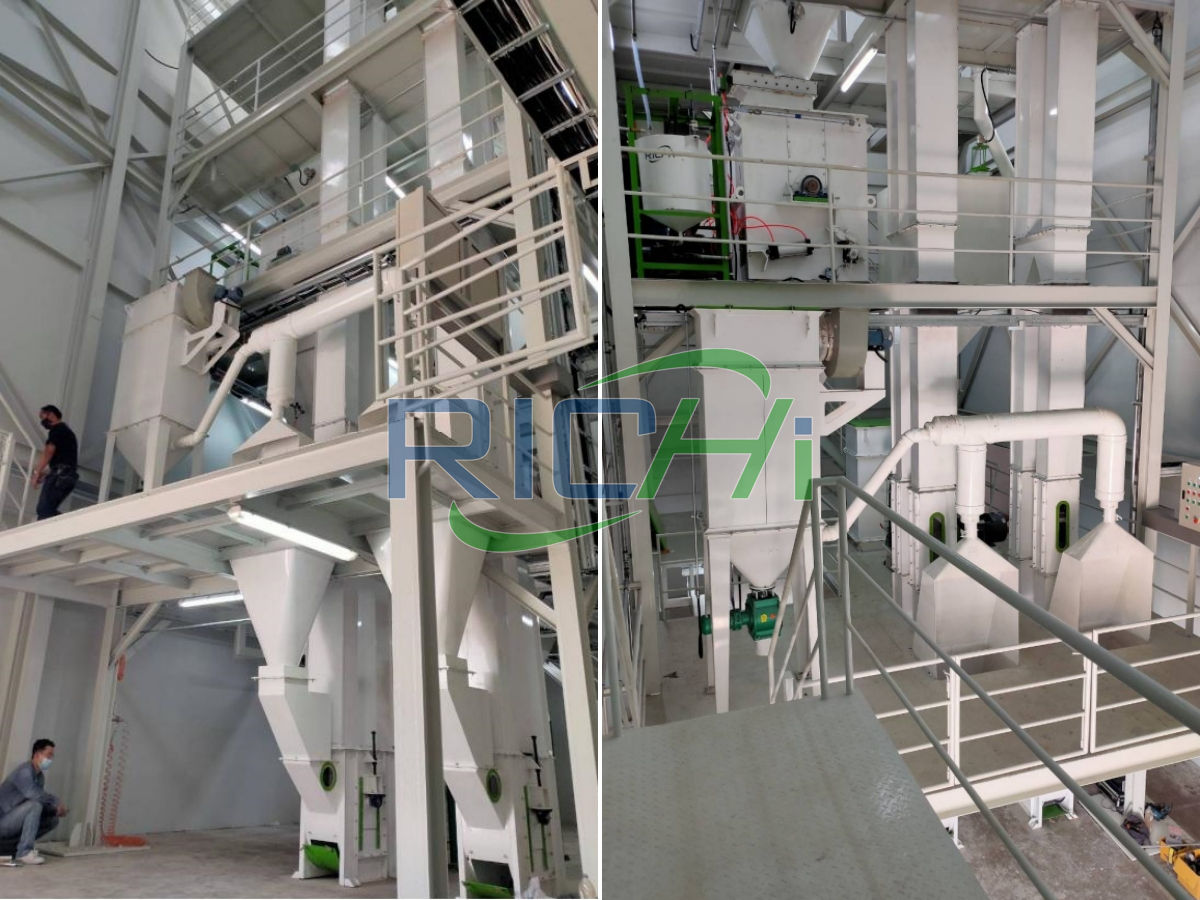
Thailand
10 t/h poultry premix feed mill in Thailand
- Project Time: 2021. 07. 22
- Premix feed mill cost: 120,000 USD
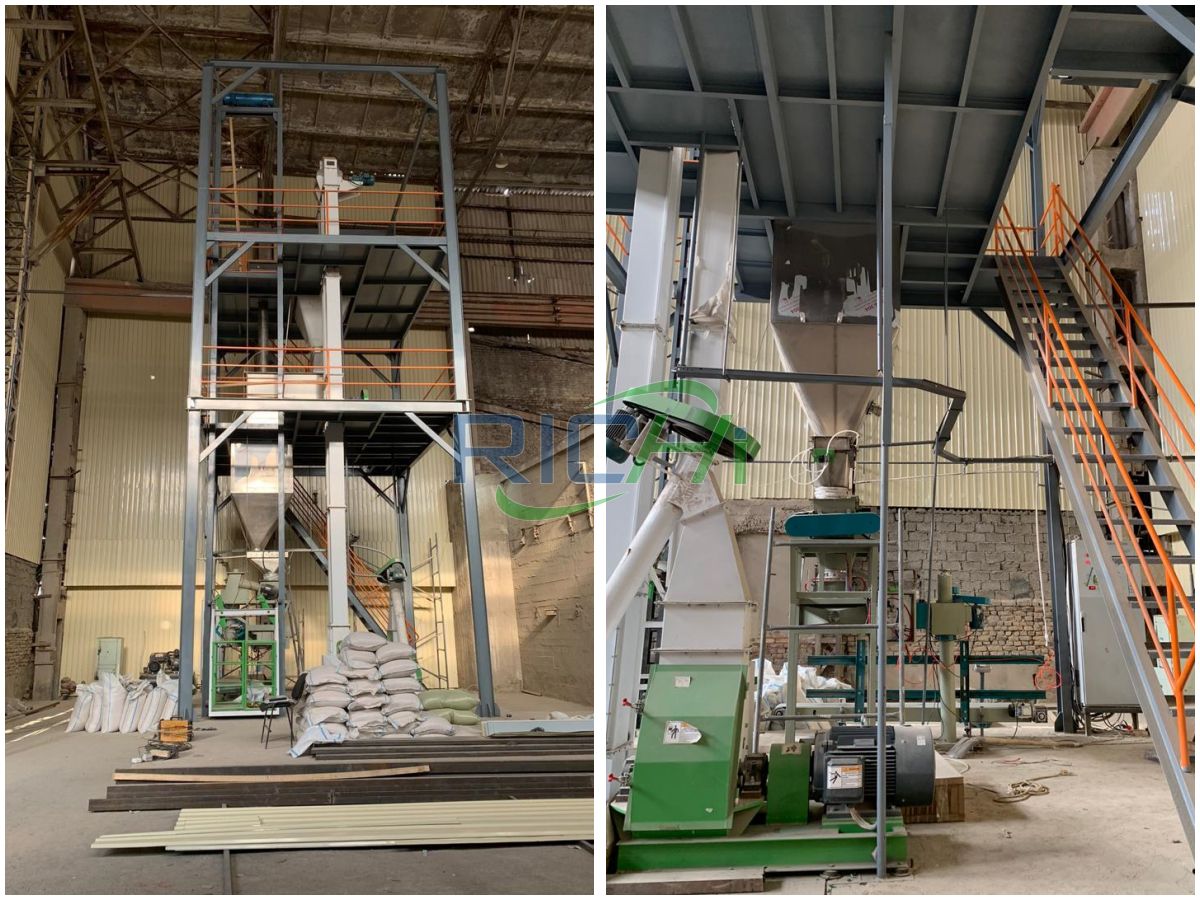
Uzbekistan
5 t/h premix feed mill in Uzbekistan
- Project Time: 2020. 04. 24
- Premix feed mill cost: 240,000 USD
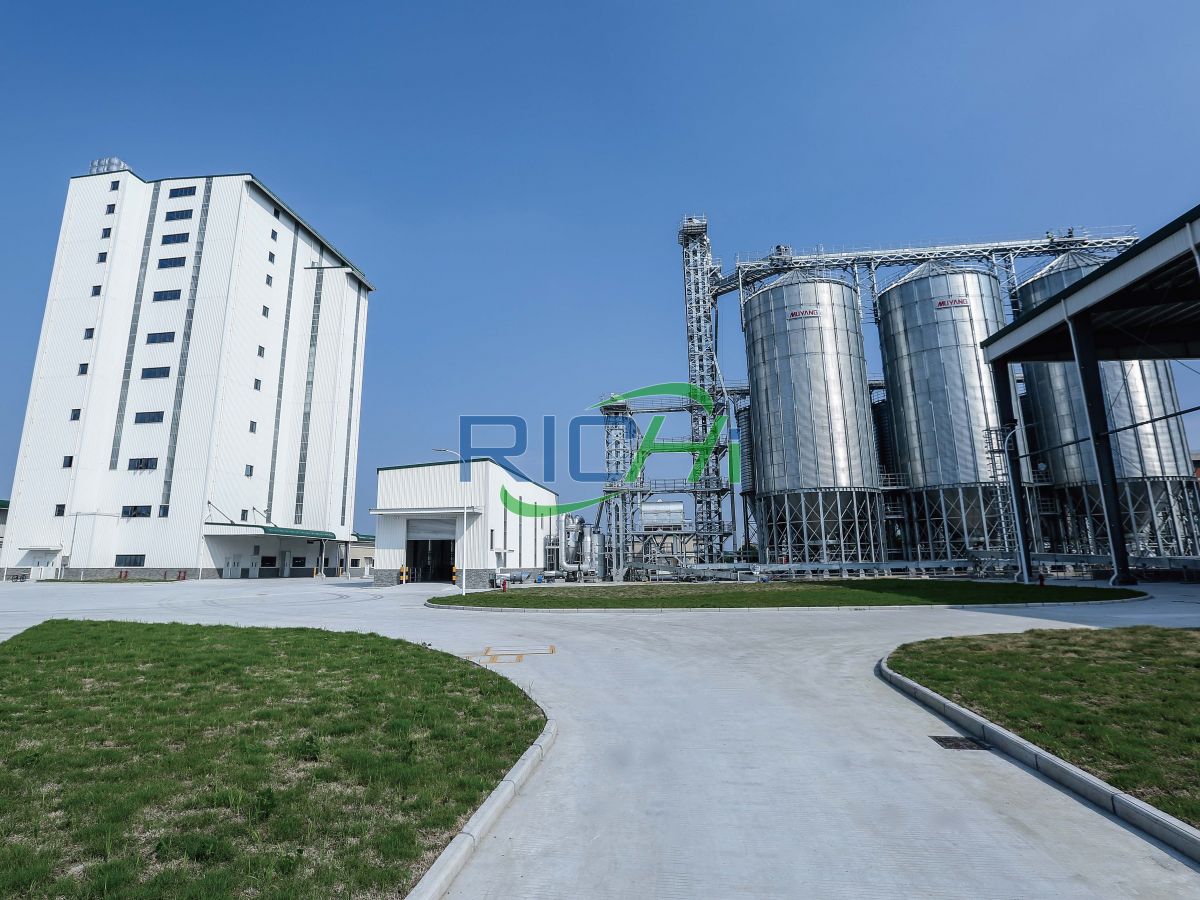
China
20 t/h Premix Feed manufacturing plant in China
- Project Time: 2018. 03. 14
- Premix feed plant cost: 1,260,000 USD
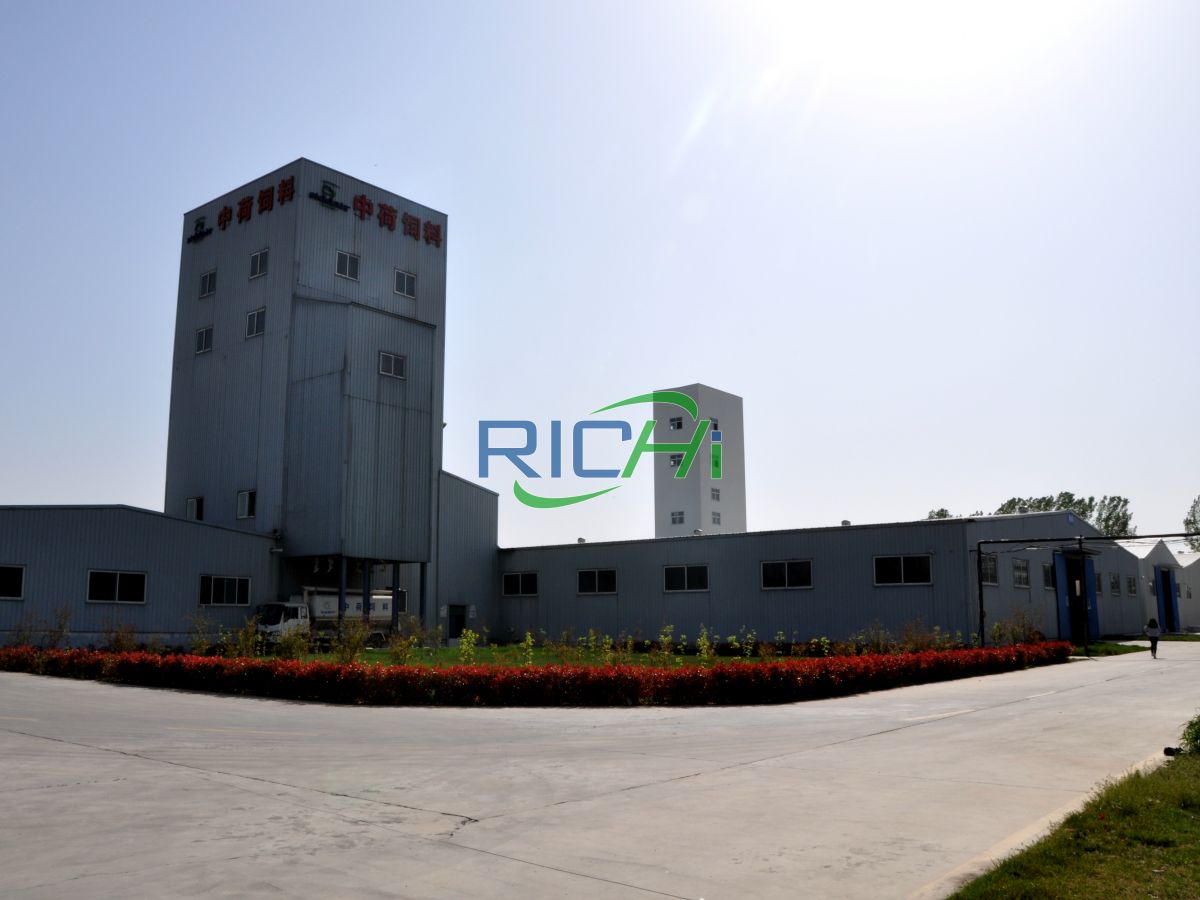
China
10 t/h Premix Feed Mill factory in China
- Project Time: 2015. 08. 18
- Premix feed plant cost: 740,000 USD
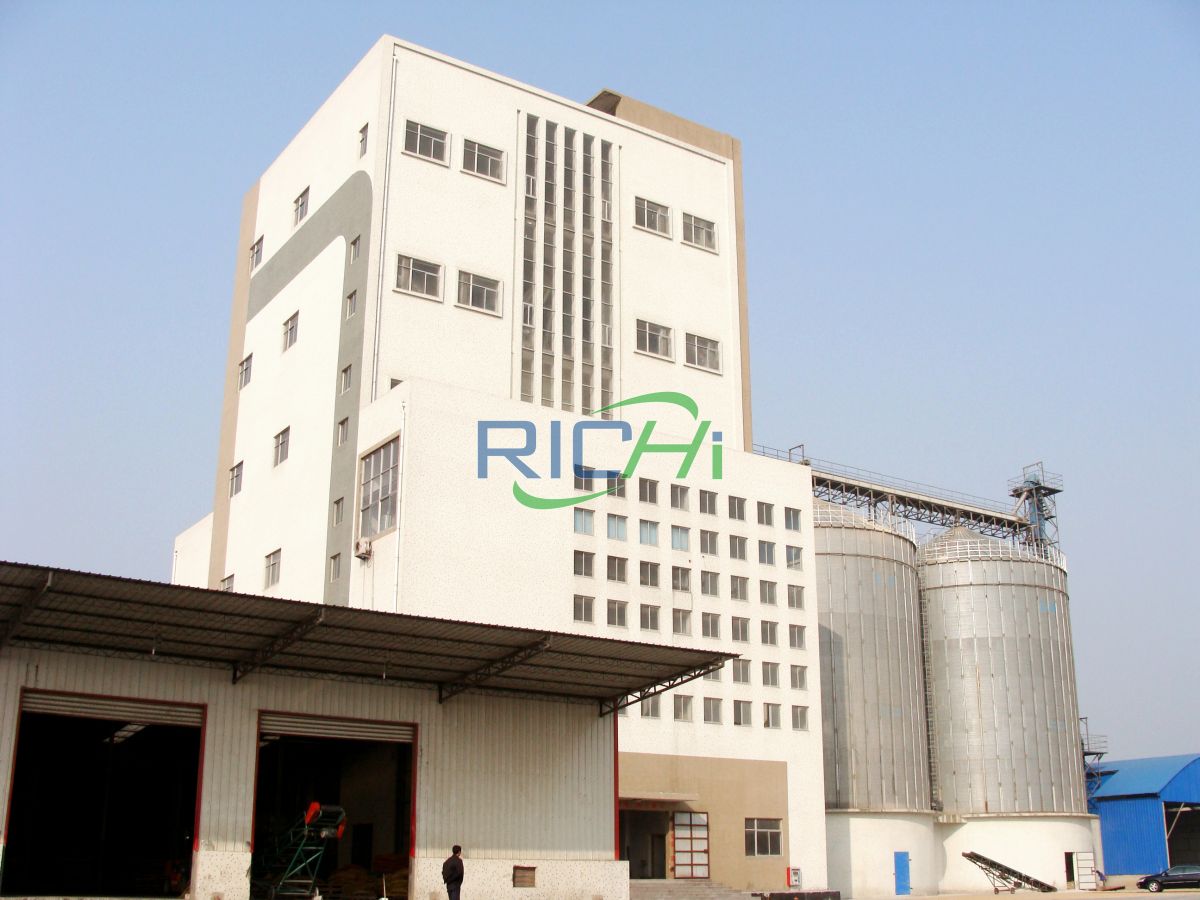
China
15 t/h Premix Feed Mill plant in China
- Project Time: 2017. 04. 19
- Premix feed plant cost: 980,000 USD
Modular premix feed mill plants are assembled and tested at our RICHI factory before delivery to the desired location, ensuring fast and reliable commissioning in terms of scheduling, quality and also the budget. In addition to complete premix feed plants, we also supply extensions, modules and individual equipment.
premix feed mill equipment
To build a new premix production line, you need to choose the premix plant process and premix feed equipment that suit you according to the funds in hand.
Regardless of the production process, from the premix main mixer (including small material addition hopper) to the packing scale, all equipment and hoppers in contact with materials must be made of stainless steel.
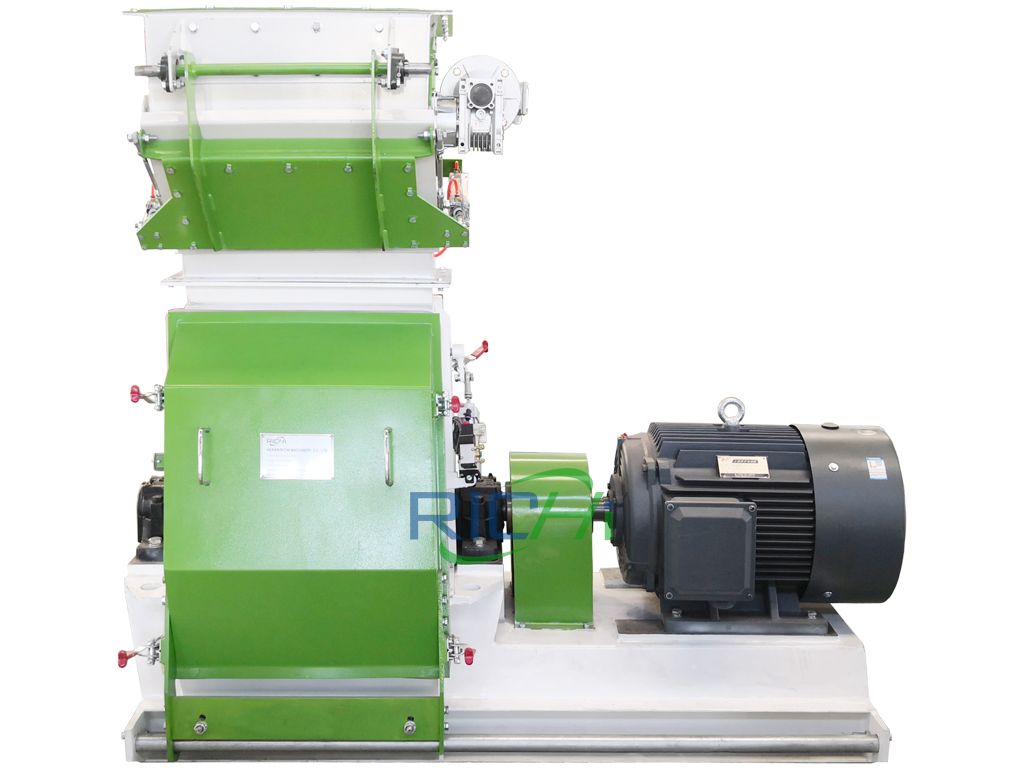
Premix feed Hammer mill grinder
Most animal livestock poultry premix manufacturers have a carrier crushing process to meet the particle size requirements of the premixed carrier.
Usually, the carrier is crushed by a hammer mill and then enters the elevator to be vertically transported to the main mixer. The advantages of this process design are energy saving and reliable operation with low noise.
- Capacity: 3-25T/H
- Main Power: 30-160KW
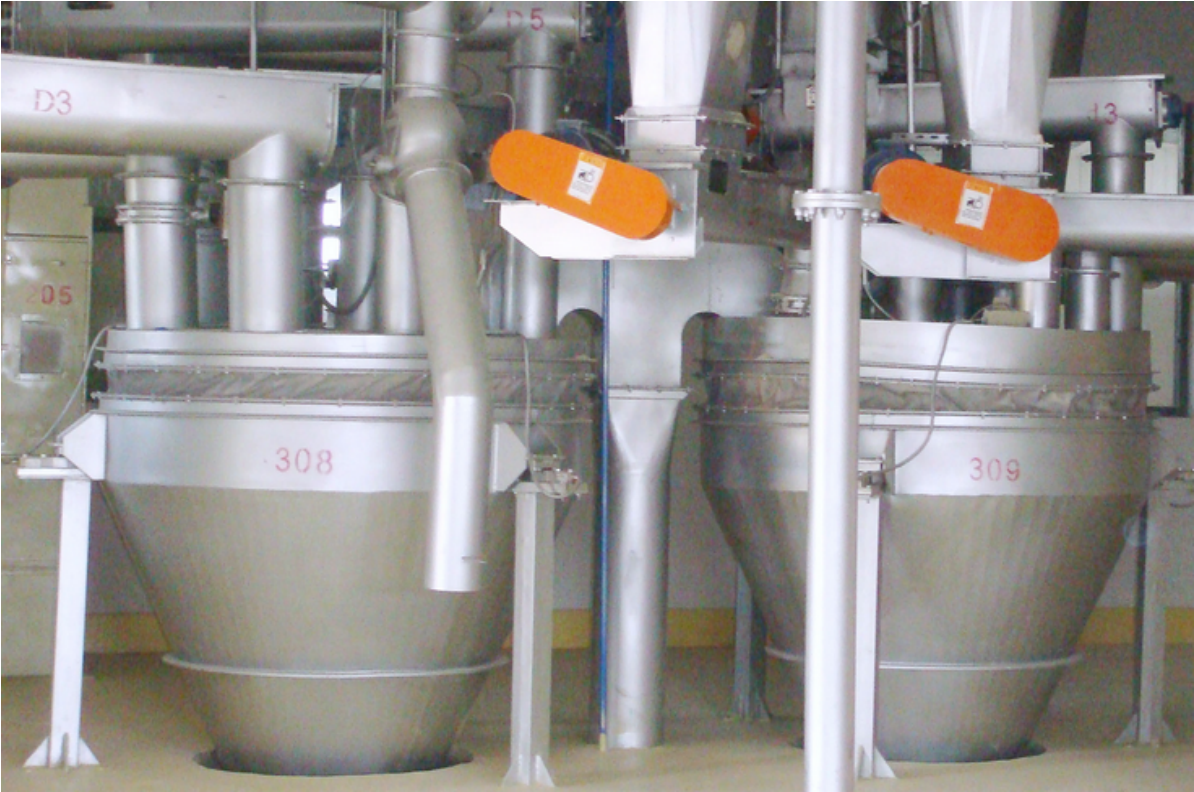
Batching scale
At present, the commonly used batching methods mainly include automatic batching system, manual weighing batching and combination of manual and automatic batching. Correct selection of batching scales and appropriate batching methods are the keys to ensure accurate batching.
Due to the large difference in the proportion of raw materials in the premix, the allowable batching error is also different. A combination of large, medium and small scales can be used to batch separately to improve the batching accuracy.
- Capacity: 1-2000 KG/H
- Model: PLC Series
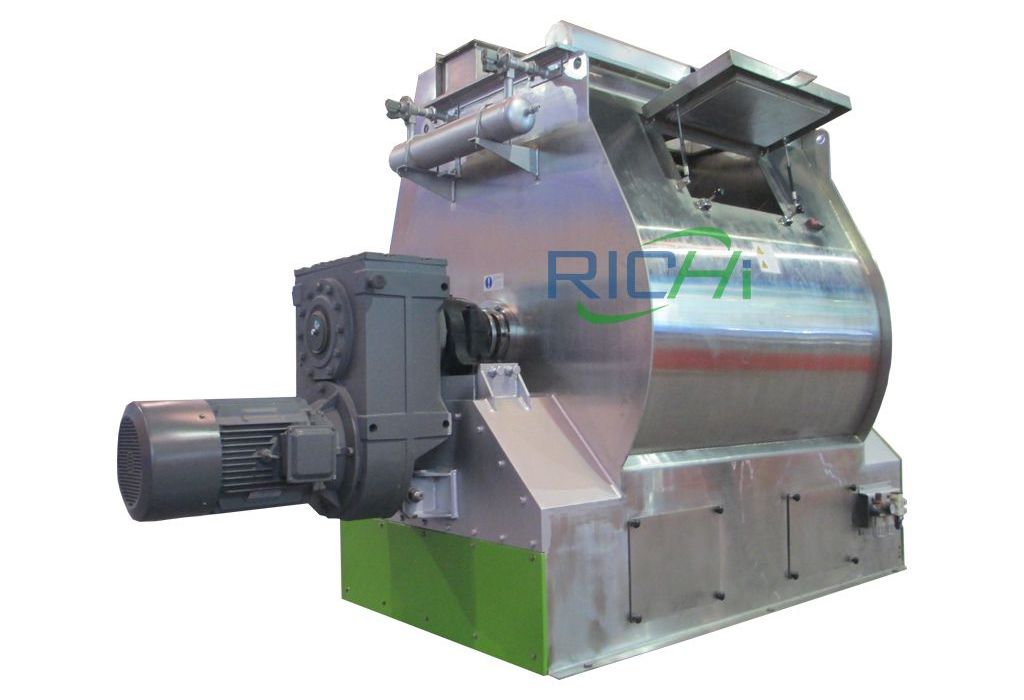
Premix mixer
The premix feed mill generally uses stainless steel twin-shaft paddle-type high-efficiency mixer and single-shaft double-blade feed mixer machine. These two mixers have high mixing uniformity, and their production variation coefficient is less than 5%, and can even reach 2%~3 %.
The bottom of the premix mixer has a full-length door, no residue, and it is equipped with a blowing device and an observation door, which is more convenient for cleaning the premix mixer. Special shaft end seal ensures no material leakage.
- Capacity: 250-2000KG
- Power: 4-55KW
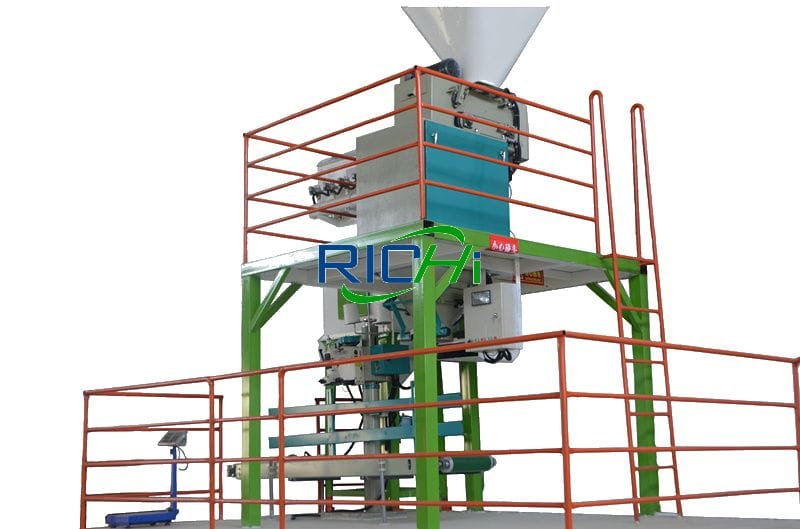
Packing scale
In most cases premixes are shipped in sachets of 5-30 kg/bag and there is now a wide selection of suitable bagging equipment.
Although there are many different types of bagging equipment, there are only a few that can carry out the bagging of all quantitative ranges and can use special packaging techniques.
The automatic bagging machine can be a stainless steel premix special oblique auger with bucket packaging scale or a stainless steel weight-reducing packaging scale.
- Capacity: 6-12 Bags/Min
- Power: 1.1-5 KW
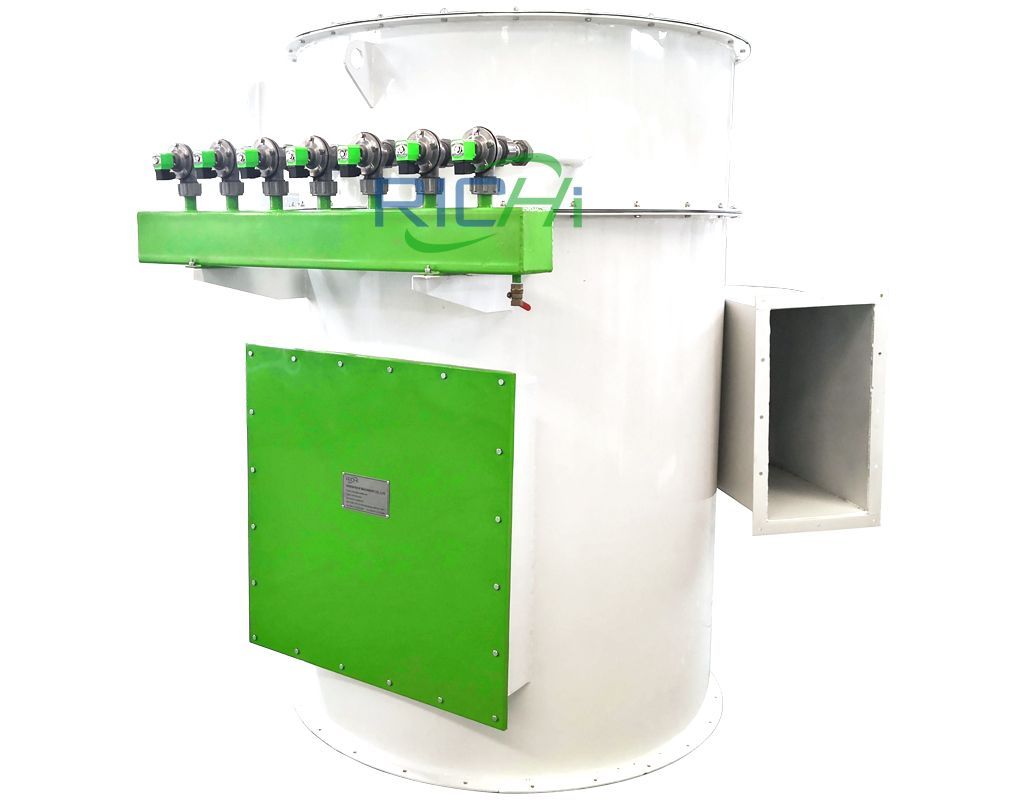
Pulse dust collector
It is absolutely necessary to install an efficient and reliable ventilation system in an advanced modern premix processing plant. These devices not only help to prevent the drastic increase of dust, but also ensure dust-free and disturbance-free operation.
This aspect is greatly affected by the Operators welcome. Another important benefit is to keep the environment in the premix feed mill plant as clean as possible by reusing the dust that has been generated.
- Power: 0.75-15KW
- Model: TBLM
Each premix feed mill is designed according to the raw materials and recipes used by the customer while also enabling new recipes to be introduced at any time. The production system generates reports on all the main parameters, such as temperatures, mixes and doing quantities. The dosing and Conveyor systems are also designed to minimize separation.
In short, the selection of premix production line technology and equipment should be based on the customer’s own needs and actual conditions. We will carefully design each premix plant and deliver a set of safe, clean and accurate premix production lines to customers.
premix feed mill Equipment Video
premix feed mill features and advantages
The RICHI premix feed mill process has a scientific, reasonable and practical process, a short route, and raw materials are transported by special lines to avoid cross-contamination between raw materials.
The batching process is highly automated to ensure high accuracy; each dust removal point is treated separately, dust is well controlled. The process has moderate investment cost and is suitable for premixed feed processing production lines of various scales.
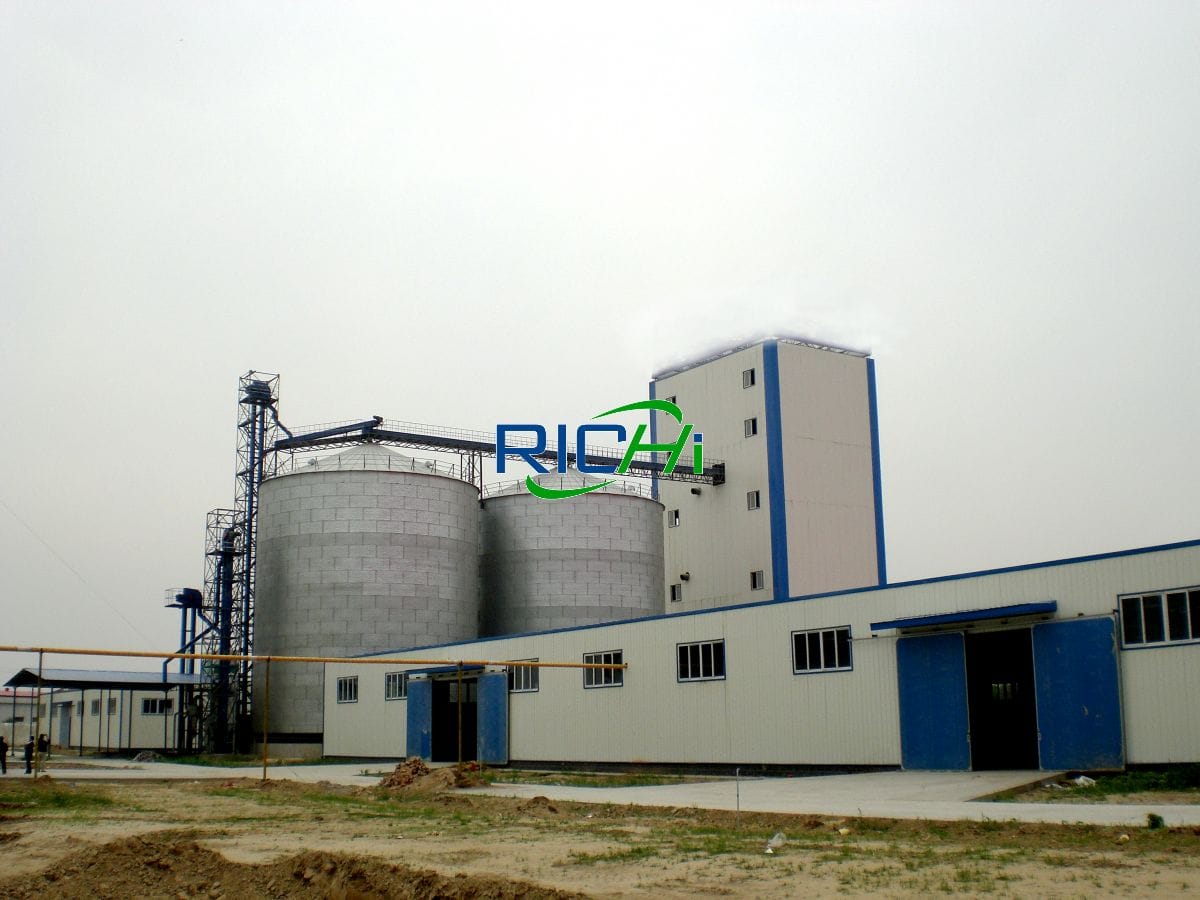
① The process flow is short. In the process of producing premixed feed, we focus on two links, one is precise batching, and the other is uniform mixing. After completing these two production processes, there is generally no need to configure the conveying link, and it is directly packaged to reduce the grading of the finished product and prevent cross-fertilization. pollute.
② The precision of ingredients is high. There are many kinds of raw materials in the premixed feed, and the proportions vary greatly. The weighing accuracy of our equipment can reach: 0.01%-0.02% for trace components, 0.03%-0.05% for medium components, 0.1% for constant components, and 0.25% for carriers.
Therefore, in terms of technology, we usually set up 3 to 4 batching points for customers, each batching point weighs raw materials of the same weight grade, large scales are used for large quantities, and small scales are used for small quantities.
③High mixing uniformity requirements. The coefficient of variation (CV) of the mixing uniformity of the RICHI stainless steel mixer is not more than 5%, and the large-opening discharge door is adopted to reduce the residue in the machine. The residue should be less than 100 g/t to reduce the pollution of trace components.
④ Active protection of raw materials. The properties and functions of various feed additives are different, and they are prone to chemical reactions with each other to affect their activity, and the compatibility relationship is complicated. However, our premix factory process protects the activity of the active ingredients to the greatest possible extent.
⑤ The premix feed mill equipment is corrosion-resistant. Most of the pre-mixed raw materials are active substances, which are highly corrosive to equipment. Except for carriers, diluents and inactive substances, other equipment in contact with active substances should be made of corrosion-resistant stainless steel.
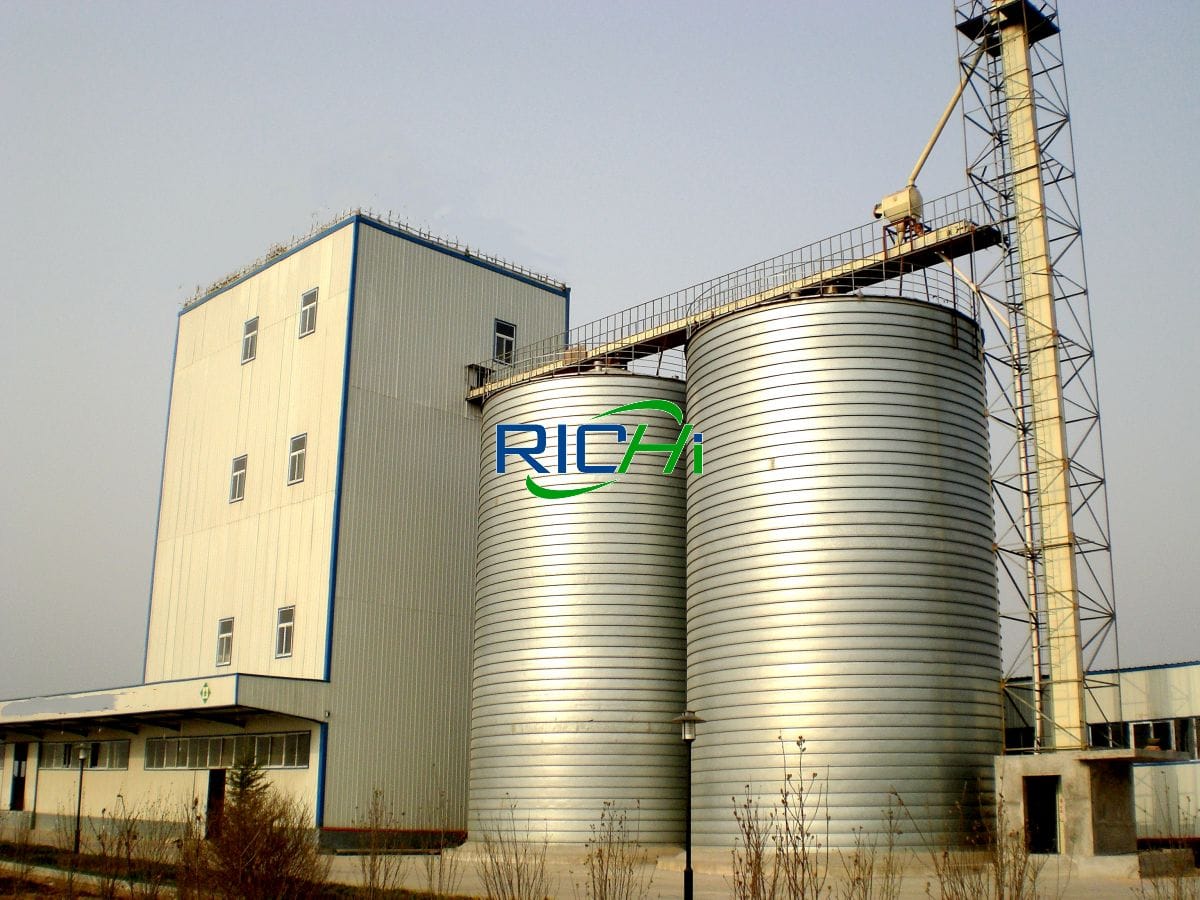
⑥ Dust control. The particle size of the premix is fine, and dust will be generated in many links of production. The dust problem is the focus of the safety production and environmental protection work of the premix feed factory. In terms of the design of the whole factory, we take effective measures to control the dust.
Each equipment or connection should be sealed, and corresponding suction hoods and suction ports should be equipped in each trace component distribution point, feeding point, packaging point, manual operation area and finished product warehouse, and a dust collector with better performance should be equipped at the same time . (Find RICHI on YouTube)
Faqs of premix feed mill plant

I have a poultry feed mill factory, how to transform it into a premix feed factory?
Premix is the front process of feed production, although it only accounts for a small proportion in feed, it plays a key role.
The equipment and process required for premix production are relatively few and simple, but the equipment manufacturing precision and process requirements are relatively high. For the poultry feed factory to be transformed into a premix feed mill, the following problems are mainly solved:
- 1. The mixing uniformity of the mixer should be high, there is no mixing dead angle, and there is no residue in the discharge;
- 2. The accuracy of the ingredients must be accurate. The traditional Chinese medicine and trace elements in the production of premixed materials only account for a small amount. The ingredients must be accurate, otherwise the product quality will be seriously affected;
- 3. To prevent cross-contamination, whether it is material lifting or transportation, it is required to achieve low residue and automatic cleaning to avoid cross-contamination;
- 4. A good and clean working environment is also required in the production of premixed materials. Dust is easily generated during the production process of premixed materials, and dust has a great impact on the health of operators. Therefore, good dust removal facilities must be configured.

What are the materials that need to be crushed in the premix feed mill?
The materials to be crushed in the premix feed mill plant include: carriers such as corn and bran; carriers such as calcium bicarbonate; mineral salts such as copper carbonate and ferrous sulfate; cobalt carbonate, calcium iodate and sodium selenite, etc.
Grinding is to make the carrier, diluent and other raw materials meet the premix particle size requirements stipulated in the standard, so as to ensure that the components are mixed evenly and obtain the maximum biological efficacy.
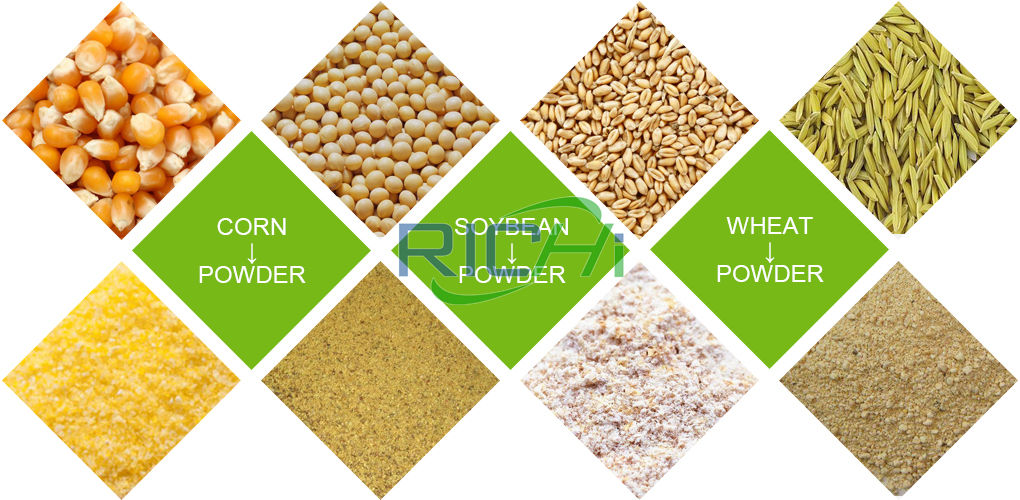
For compound premixes, the particle size requirements are: all pass through a 16 mesh sieve, and no more than 10% are retained above 30 mesh; for trace element premixes, the particle size requirements are: all pass 40 mesh, and no more than 20% are retained above 80 mesh. %.

Does the premix feed mill need dry raw materials?
In order to effectively protect the activity of the active ingredients, the moisture content of the raw materials in the premix is relatively high, generally not exceeding 10%. Some raw materials have high moisture content or high moisture content due to moisture absorption, and need to be dried.
In general, an electric oven can be used. If the drying volume is large, a small drying room can be made. The drying room consists of a trolley for raw material trays, an exhaust fan, Electricity! Steam” heating coil and a set of automatic temperature control instrument.

Does the animal premix feed plant need ventilation and dust removal?
Because the raw materials are all in powder form and the particle size is very small, there are many dust spots and a large amount of dust in the production of premixed materials, which is harmful to the health of workers and must be strictly controlled. The main dust generation points are: raw material feeding, manual batching table, packaging port, equipment, and places where the silo is not tightly sealed.
On the basis of following the principle of “closed first, supplemented by air suction”, the premix feed mill mostly adopts the ventilation and dust reduction method combining centralized dust removal and single-point dust removal.
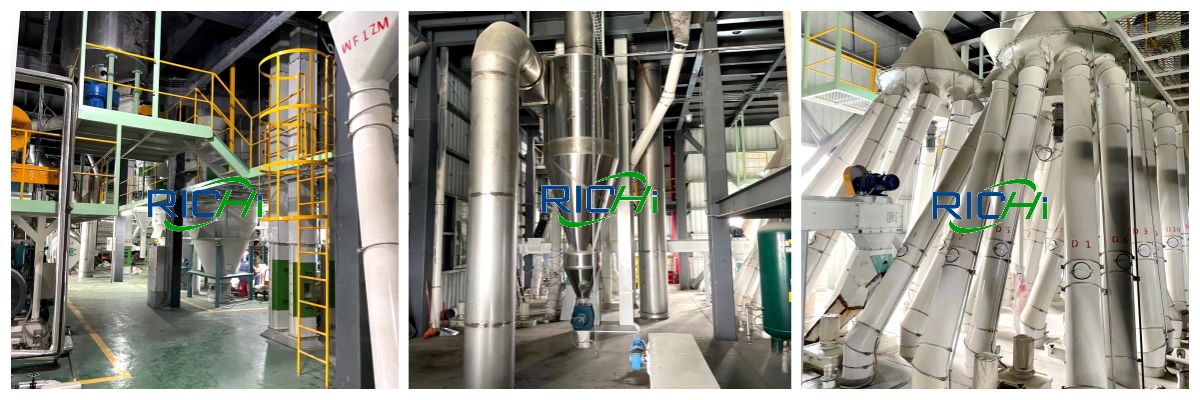
Due to the small particle size of the material, it is required that the wind speed at the dust suction port should not be too high to avoid too much active ingredients being sucked away. First-level or second-level dust removal should be used, but it must be equipped with a bag filter. In order to reduce waste and avoid cross-contamination, it is best to use single-point dust removal at the manual feeding port of the mixer.
Due to the strong hygroscopicity of the raw materials and finished products of the premix, the bag of the dust collector is easy to be damp and rotted. The cleaning of the bag should be strengthened, and it should be dried regularly, and replaced in time if damaged.

How to choose a premix mixer for premix feed mill plant?
Because the horizontal or animal feed premix drum mixer can handle materials with large variation in bulk density, it generates less friction and heat during mixing, and can provide a larger exposed surface when adding liquid materials, so it can be used for premixing mix of ingredients.
When choosing a animal feed premix mixer, the following characteristics should be considered: whether it is easy to add materials and suitable for adding liquid materials; whether it can improve mixing efficiency and eliminate static charges; whether it is easy to clean, etc. Any lack of any of the above features will cause serious problems.
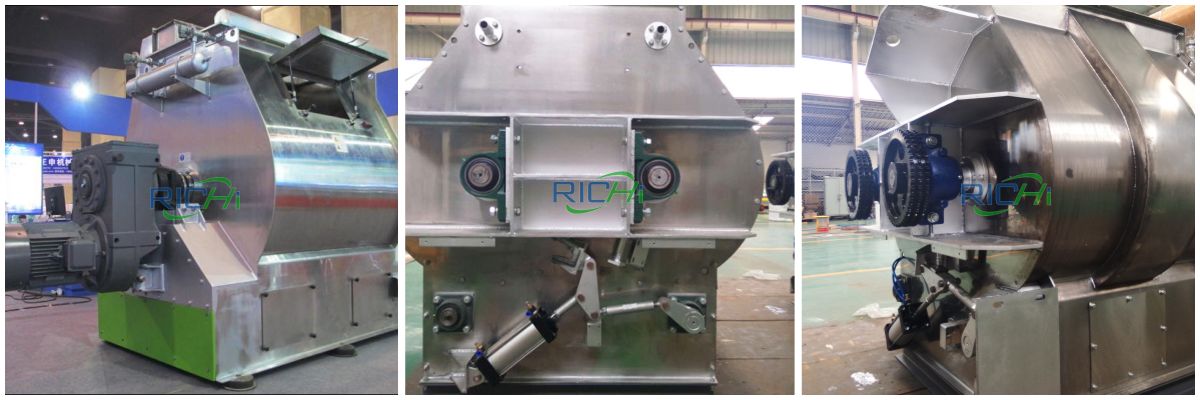
Although mixers vary in shape, design, and process parameters, there are 2 main considerations when choosing a mixer: mixing time and surface area of internal parts. The mixing time should try to avoid static arching, the internal parts should be as few as possible, and the minimum surface area should be ensured to reduce arching and facilitate cleaning.
The manufacture of premix is different from the manufacture of compound feed, so in order to ensure the quality of the mixture and reduce storage and transportation, the same set of equipment cannot be used.

How does the premix feed mill control the quality of the premix?
Good Manufacturing Practices (GMPs) are critical to producing high-quality premixes. The quality assurance program for premixtures should be developed based on established GMPs, which allows continuous inspection of the entire production process to ensure that the product produced after the completion of the production process meets its specified requirements.
Common quality control programs include:
- With the standard as a reference, visually observe the appearance (color, texture, etc.) of each batch of products;
- Sampling and testing the active ingredient content of each batch of premix during the mixing process;
- Keep samples/batch records of each batch of products for a certain period of time, the specific length of time is determined according to the expiration date of the active ingredient;
- For each raw material, traceable original records shall be kept.
- Inventory control and proper storage time of premixes are also very important. If possible, premixed feed products should be purchased once a month, and the storage volume and purchase frequency are affected by the stability of the product’s active ingredients and cash flow. Premixes should be stored in a dry and cool place, and a program for pest and rodent control should be developed.

How does the premix feed mill choose the appropriate carrier and diluent?
The purpose of using the carrier is to physically carry the micronutrients of the finely ground powder, and at the same time ensure that the raw materials are mixed evenly during the processing.
Rice husk powder can better stabilize fine particles because of its uniformity, shape, and porosity, and is a commonly used carrier in premixes. Other commonly used carriers include: corn cob meal, wheat bran, and DDGS, among others.
The particle size of the carrier should be appropriate to ensure that the produced premix not only has good fluidity and low dust, but also facilitates the loading of active raw materials without classification.
Diluents are used to amplify or dilute micronutrients. As a flow agent, it affects the density of the premix and also acts as a filler for the premix. Diluents commonly used in premixes include stone powder, zeolite powder, etc.
The combined application of carrier and diluent can achieve the desired density, achieve maximum stability and ensure cost economy. The proportion of carrier and diluent depends on the purpose of the premix and the proportion of the compound feed.

When selecting a certain carrier and diluent to make a premix, further consideration should be given to its particle size. When the particle size of the two raw materials differs greatly, it is easy to cause the large particles to move farther in the mixing process due to the large difference in the flowability of the raw materials, resulting in classification. The flowability of a raw material or premix can be judged by observing the angle of repose.
In addition, the bulk density is also an important physical characteristic of the carrier and diluent, and large variations in the bulk density of each raw material in the premix should be avoided to reduce grading.
In low-priced premixes, the proportion of calcium carbonate is often added, so the proportion of stone powder in the compound feed is relatively high. From a nutritional point of view, this will cause an imbalance in the ratio of calcium to phosphorus in the diet, thereby affecting animal performance. In actual production, cost should not be the basis for selecting carriers and diluents, but should emphasize the ability of such carriers or diluents in premixes to carry micronutrients, and their compatibility with other nutrients and compound feeds .

How does the premix feed mill make the premix formula?
This step is very critical and should be completed by professional formulators or other technically trained personnel. During the formulation process of many premixes, due to the paranoia of the formulator’s personal understanding, the formulation is not reasonable.
Before making the formula, the formulator must also consider the source of raw materials, specific gravity variation and particle size, cost, processing characteristics, possible interaction effects between different raw materials, and availability of nutrients.
The availability of vitamins and trace elements varies with their sources, which should be considered when formulating high-grade premixes. It is best to have a comprehensive understanding of the sources and potency of vitamins in advance.
Formulators need to consider the stability and possible interactions of various raw materials when writing their premix specifications. Vitamin products can ensure their stability and potency by:
- Using synthetically stable vitamin derivatives; adding stabilizers;
- Add coating;
- Absorption of liquid vitamins with suitable carriers;
- use of water-soluble and water-dispersible vitamins;
- Standardized content and excessive addition of active ingredients (2%~10%);
- Use highly bioavailable vitamins.

How to realize the optimal investment in the premix feed mill?
On the premise of meeting the same production target, from a financial point of view, whether it is the optimal investment should be judged by whether the depreciation cost of production line equipment + manpower + energy consumption + maintenance cost is relatively the lowest.
At present, most premix companies lack comparative analysis of production costs under different conditions of equipment selection in the design and investment stage of production lines, which often leads to the following two situations:
- The direct investment of the premix feed mill is low and the production cost is high;
- The direct investment of the premix feed mill is high, and the production cost is high.
Neither of the above two cases has reached the relative minimum of production cost. Next, RICHI will illustrate how to calculate and judge the optimal investment of the animal feed premix production line through the selection and design of different equipment in the two processes of feeding and packaging.
- Feeding process
Taking a feeding port with a daily feeding capacity of 100t as an example, the 10-year depreciation of the equipment shall prevail. From a financial point of view, according to the optimal investment principle, that is, the equipment depreciation cost + manpower + energy consumption + maintenance costs are the lowest.
Therefore, it should be in the feeding process of raw materials and aniseed materials, using automatic unpacking machines, compared with manual feeding, can save at least hundreds of thousands of dollars in cost in 10 years.
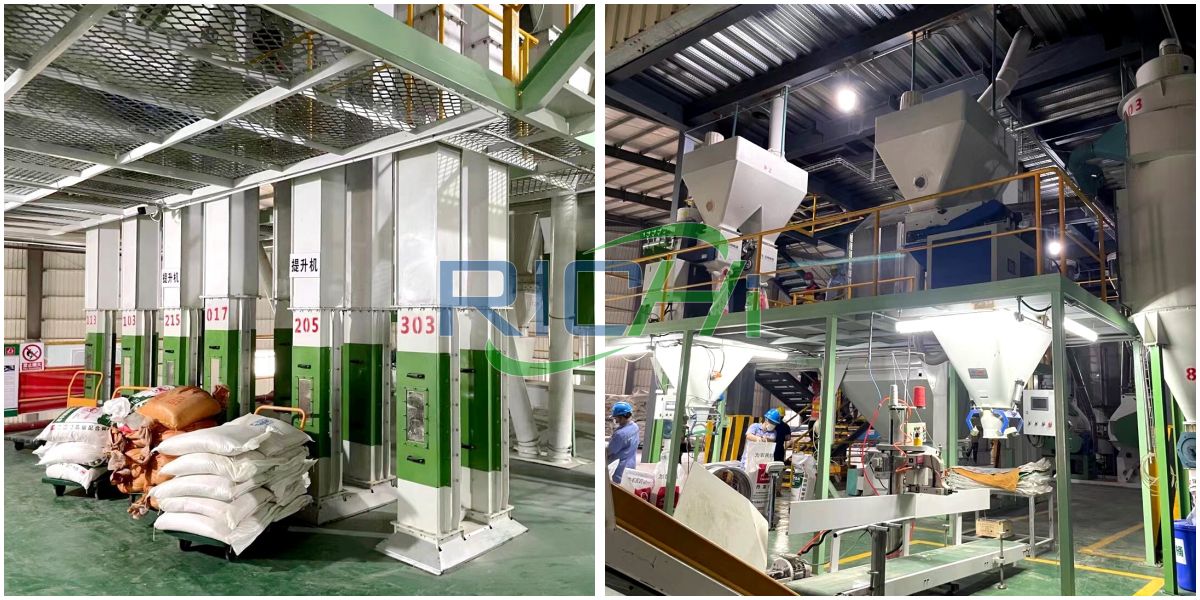
- Packaging process
In the packaging process, the packaging methods currently available include manual packaging, semi-automatic packaging, and fully automatic packaging. The following are the labor costs, production capacity, and equipment depreciation corresponding to the three feeding methods.
Based on the premise that the premix feed mill capacity is 15t/h, the packaging is 25kg/package, and the packaging volume per shift is 4800 packages. The required speed of the packaging process is on the premise of 600 packs/h, the annual production cost is calculated based on the 10-year depreciation of the equipment (excluding the palletizing part).
According to the principle of optimal investment, that is, equipment depreciation cost + manpower + energy consumption + maintenance cost is the lowest. In the packaging process, semi-automatic packaging machines and fully automatic packaging scales should be used.
Compared with manual packaging, the two packaging lines can save at least cost in 10 years hundreds of thousands of dollars.

How does the premix feed mill select high-quality raw materials?
The quality of raw materials has a great influence on the actual effect of the premix. The basic requirements of high-quality raw materials are high purity and no toxic and harmful substances.
- The most important thing is the content of active ingredients, especially vitamin A and vitamin C, which are easily destroyed. Additives should be determined after actual measurement.
- Trace element compound raw materials must have the characteristics of high biological potency, stable physical properties and less toxic and harmful substances.
- In addition, for some additives, their own quality and dosage form are likely to affect other additives, so special attention should also be paid.
- When selecting trace element raw materials, many factors such as the content of its components, particle size, crystal water and content of toxic and harmful substances should be considered.
- Drug feed additives should also pay attention to safety issues. When using them, they must fully understand their use period, drug withdrawal period and precautions according to the instructions and test materials provided by the manufacturer.

The premix production process of premix feed mill is affected by factors such as raw material variety, source, formula, production variety, material warehousing method, plant height limit, capital and other factors. There is no standard perfect process. It needs to be designed according to local conditions and according to the actual situation. craft.
Richi Machinery will be happy to advise you whether you are considering a modular premix feed mill for your farm or a new equipment investment at your plant. All of our products are designed and manufactured to meet the individual needs of our customers, so get in touch and let’s see how we can help!
BEFORE YOU SEND INQUIRY
Please provide us with project information as much as possible:
- For a complete premix feed mill project: the material availability, the required output capacity, the process technology, your budgetary and financing status, the estimated starting time, etc.
- For singular premix feed mill machinery: the model, the capacity, your budgetary information, other requirements, etc.
- For spare parts: size and dimensions, material and weight, and your drawings with details, you can send the drawings to [email protected]
- Detailed information is very helpful for us to give you the best-customized offer/quotation at the soonest time.
